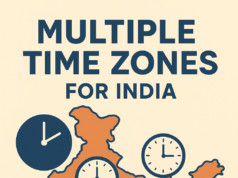The economic history of India, especially the history of India’s central planning era, is a complex interplay of ideology, policy, and their unintended consequences. To get a view on how events unfolded and to identify the power and politics behind them, economist Pranab Bardhan’s work is a useful guide. In his book The Political Economy of Development in India, an important concept helps to magnify India’s political economy. He shows how self-interested proprietary classes engage in interest group politics to benefit themselves at the cost of the overall economy.
Proprietary classes are social groups that hold large economic power and control over resources. Bardhan highlights three proprietary classes that are dominant in shaping India’s trajectory. First, large and medium businesses, second, large and medium farmers, and third, professional salaried classes. Studying how these proprietary classes act holds promise to understanding the interplay of present day politics too.
Proprietary classes engage in what he describes as rent-seeking behaviour. Public choice economists Gordon Tullock and Anne Krueger describe rent-seeking activities as those that generate wealth without any reciprocal contribution to society. Some examples of these benefits are efforts at obtaining subsidies, securing favourable tariffs to import or export goods, or creating regulations to eliminate competition.
It is important to note that recognising the interests of these classes is crucial for the political stability and re-election prospects of the national party looking to remain in power.
These three self-interested groups in India have caused a collective action problem, or an instance where self-interests are achieved at a net loss to the entire society. Bardhan presents this collective action problem as the cause that led to economic stagnation in India.
The first proprietary class of large and medium businesses was a group of leading industrialists who drafted the Bombay Plan in 1944 to suggest interventionist strategies for economic development. Licencing policies made under central planning helped to retain their monopoly positions. State policies also protected industrialists from foreign competition. The in-roads made by this proprietary class and the government-industry cooperation led to many instances of cronyism. By 1976, the top 20 business houses controlled nearly two-thirds of the total productive capital in the private corporate sector. While there was an increase in industrial production through pro-industrialist policies, this rise in production did not translate into an overall increase in India’s per capita income. As pointed out by economist BR Shenoy, India lived through a long spiral of poor economic growth that remained unchanged throughout successive five-year plans made between 1950 to 1980.
The second proprietary class worth examining to understand India’s political economy is the interest group formed of large rural landowners and rich farmers. Although they represented just 19% of the rural agricultural population, they accounted for 60% of cultivated area and 53% of crop output in 1975 (George Rosen, 1986). Pranab Bardhan also argues that the less well off class of farmers allied with rich farmers, to share the benefits from cheaper means of irrigation, cheaper electricity tariff, and subsidised credit. As an interest group this proprietary class continues to lobby for higher support prices for agricultural commodities even today.
The third crucial proprietary class is that of bureaucrats, salaried professionals, and top-level unionised labour. The Indian Civil Services was composed of individuals, majority of whom were from the upper sections of society. Given, the majority of the country at the time was illiterate, the level of education of this proprietary class gave them a higher status. Bardhan argues that these elites directed educational investments away from the masses to protect their status and the rents they could extract from maintaining positions of power and influence. The strong anti-profit environment, legitimised their authority in issuing licences, allowing them to retain and increase their rental income.
Even though such interest group coalitions had a negative impact on India’s economy for many decades, these coalitions persisted. In an epilogue written to his book in 1998, Bardhan points out the alarming volumes of subsidies as a symptom to the disease that can be traced back to the continued influence of interest groups. Even post liberalisation in 1991, there was no significant break in this pattern or reduction in the levels of subsidies offered to proprietary classes.
At present, the number of public sector enterprises is largely unchanged. Bills brought into the parliament to reform agriculture are sure to fail. The share of India’s workforce engaging in manufacturing activities has reduced from 12.6% in 2011 to 11.4% in 2022. The share of manufacturing in India’s GDP in 2022 was at 17% which is lower than the promised 25% (Suresh Babu, The Hindu, 2020).
Pranab Bardhan’s work is an important contribution to understand the linkages between proprietary classes, their rent-seeking behaviour, and the negative impacts of their actions on the economy as a whole.
Post Disclaimer
The opinions expressed in this essay are those of the authors. They do not purport to reflect the opinions or views of CCS.





